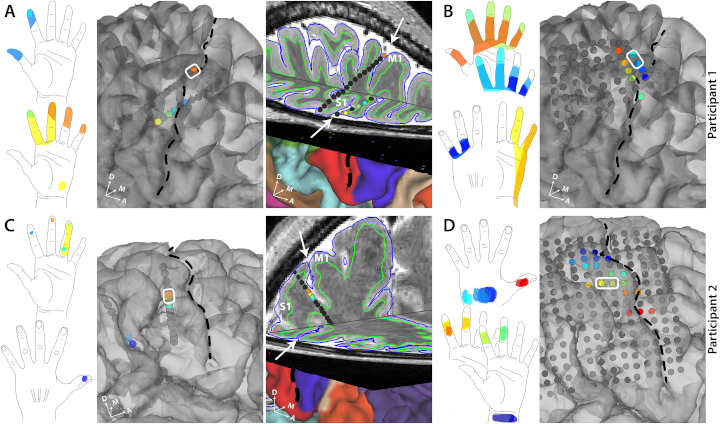A minimally invasive electrode brain implant evoked the sense of touch in a first-in-human study from The Feinstein Institutes for Medical Research. The work1 could potentially help millions of people who live with paralysis and neuropathy.
From buttoning our shirts to holding a loved one’s hand, our sense of touch may be taken for granted until we lose it. These results show the ability to generate that sensation, even after it is lost, which may lead us to a clinical option in the future,
said Chad Bouton, the study’s co-principal investigator and professor in the Institute of Bioelectronic Medicine at the Feinstein Institutes.
Stereoelectroencephalography
Many illnesses and injuries, including stroke, diabetes or spinal cord injury, can produce loss of touch, which makes everyday movements difficult and takes an emotional toll on patients. Imagine not being able to feel a hot cup or the hand holding yours. Previously, through brain-computer interface (BCI) technology, researchers have been able to electrically stimulate certain (gyral) areas of the brain and restore some sensation to the hand.
Through this new research, scientists have successfully shown that stimulation of harder to reach sulcal areas of the brain using stereoelectroencephalography (SEEG) electrodes can evoke precise sensory percepts in the fingertips.
In the procedure, led by, co-principal investigator on the study neurosurgeon Ashesh Mehta, MD, two patients were implanted with the SEEG electrodes in the sulci (grooves) of the brain. While providing electrical stimulation the study participants reported feelings of “tingling” or “sensation of electricity” localized to the hand and fingertips.
Bioelectronic Medicine
The Feinstein Institutes investigates bioelectronic medicine, a field of research that combines molecular medicine, neuroscience and biomedical engineering to develop innovative therapies with the aim to treat diseases and conditions through targeted stimulation of nerves, including paralysis, arthritis, pulmonary hypertension and inflammatory bowel disease.
Advances in artificial intelligence, brain electrodes and bioelectronic medicine hold significant promise for patients after spinal cord injury or stroke. This remarkable study indicates bioelectronic medicine and neurosurgery could restore functions previously lost in these conditions,
said Kevin J. Tracey, MD, president and CEO of the Feinstein Institutes.
To research the brain’s response, the same electrodes used for stimulation were also used to record neural signals during mechanical stimulation of the hand. This process has allowed researchers to deepen the current knowledge of neural circuitry involved in processing touch-related sensations in the human brain.
The study was funded through support provided by Feinstein Institutes for Medical Research at Northwell Health and partly funded by Empire Clinical Research Investigator Program (ECRIP) Fellowship.
- Santosh Chandrasekaran et al. Evoking highly focal percepts in the fingertips through targeted stimulation of sulcal regions of the brain for sensory restoration. Brain Stimulation (2021). DOI: 10.1016/j.brs.2021.07.009 ↩︎
Last Updated on November 7, 2022
